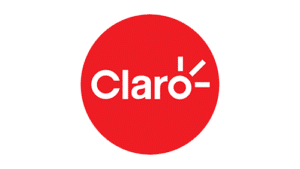In this blog, Olivier Biot considers why media and entertainment providers and pay-TV operators need to embrace fit-for-purpose security to protect investments as pirates move to a wider array of attacks. This is particularly prevalent with streaming services where larger attack surfaces provide pirates with a broader landscape to source content from.
When the first cardless solution was introduced to the market over a decade ago, the best approach was defined by the client security implementation, with vendors looking to provide a solution as secure as that previously offered by smartcard solutions. Ultimately, the continual threat of piracy that vendors faced when deploying pure software security on a one-way network led to a shift towards a more hybrid security solution or even to a full end-to-end hardware approach, such as NAGRA On-Chip Security (NOCS).
The Security Demands of OTT
Today, while security remains a fundamental part of cardless deployments, the wider content distribution footprint enabled by OTT is not without its challenges. This is because the distribution surface area requires a broader range of technologies, all working together to provide the necessary level of defense. For example, device tampering, content redistribution, or password sharing are examples that are hard to solve using a ‘standard’ security approach. That’s why, as an industry, we need to embrace the world beyond conventional security boundaries.
A range of security options are available for operators looking to introduce a set-top box as part of their transition to OTT. Starting from a pure device point of view, this includes client security for content protection alongside other mechanisms such as secure boot, or a trusted environment to provide further application isolation when executing sensitive operations. Then, based on the use cases required by operators, additional security technologies can be implemented to secure streaming services. These can include forensic watermarking to deter and track unauthorized distribution, secure communications with the streaming server, token based security to protect against illegal access to CDN content, or anti-credential sharing measures.
Creating a Service Security Strategy
But what is the right approach? The answer lies in the definition of the service’s security strategy. While client security has a clear role in secure playback, so does choosing a more modular and flexible set of security solutions that can be deployed and enabled at a time relevant to the operator’s business. This provides a winning approach with which to tackle today’s challenges of securing both the content and the service while also enabling the use cases required by today’s consumers.
At NAGRA, we continue to offer unparalleled security solutions for both Live TV and OTT, but we’re also particularly excited about the latest upgrades to our Active Streaming Protection framework that provides multiple industry-proven technologies – from secure playback and application protection to device protection and fraud prevention – all working together to address content and service piracy threats.
Driving complex digital transformation requires several key elements working together in perfect synchronization. Defining a tailored security strategy is as important as time to market or total cost of ownership and is critical for driving greater value while protecting valuable content investments. Consequently, one of the first questions we always ask our customers is how are you protecting your content and is it fit-for-purpose against your business ambition?
The right strategy can deliver significant benefits. NAGRA analysis of customer networks found that petabytes of data at significant cost were being used by pirate services. This meant operators were being hit twice – lost revenues from subscribers churning to pirate services (accelerated during a cost-of-living crisis) and additional costs from pirates directly accessing security-compromised content on the operator’s CDN. NAGRA analysis also reveals that 20% of traffic across an average operator CDN is being used by pirate services. With macro-economic pressures creating further market turbulence, NAGRA is helping the industry address this much debated issue through the creation of holistic service security strategies.
Get In Touch To Learn More
NAGRA is proud to be working with several operators worldwide to make their digital transformation projects a reality. We understand the complexities of set-top box design, content, service, and cyber security, and we’d love to continue the conversation. For a no-obligation chat with one of our solution experts, just get in touch. Equally, if you’re embarking on or are mid-transition from broadcast to streaming, check out our latest “The New Economics of pay-TV” eBook, where we explore how digital transformation has changed the media and entertainment industry, and how NAGRA can help you drive the transformation of your pay-TV business.























